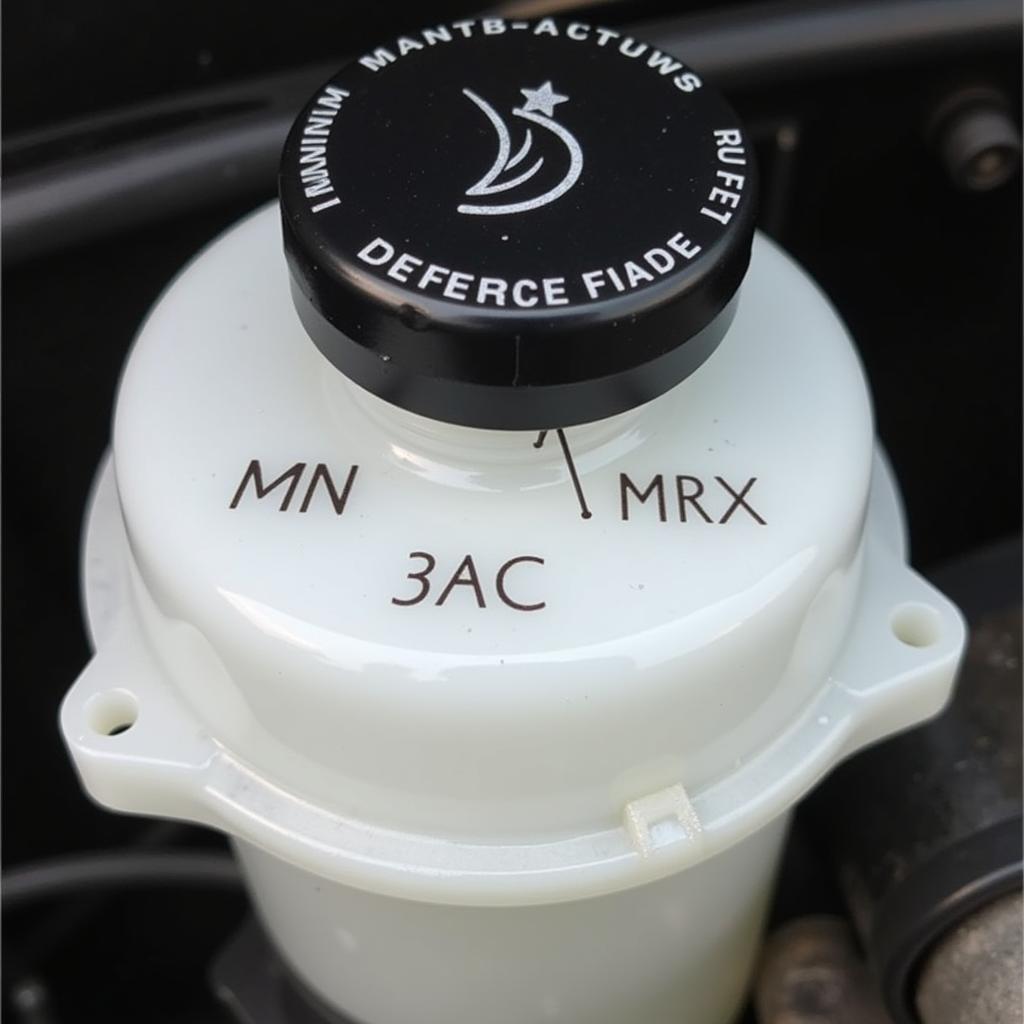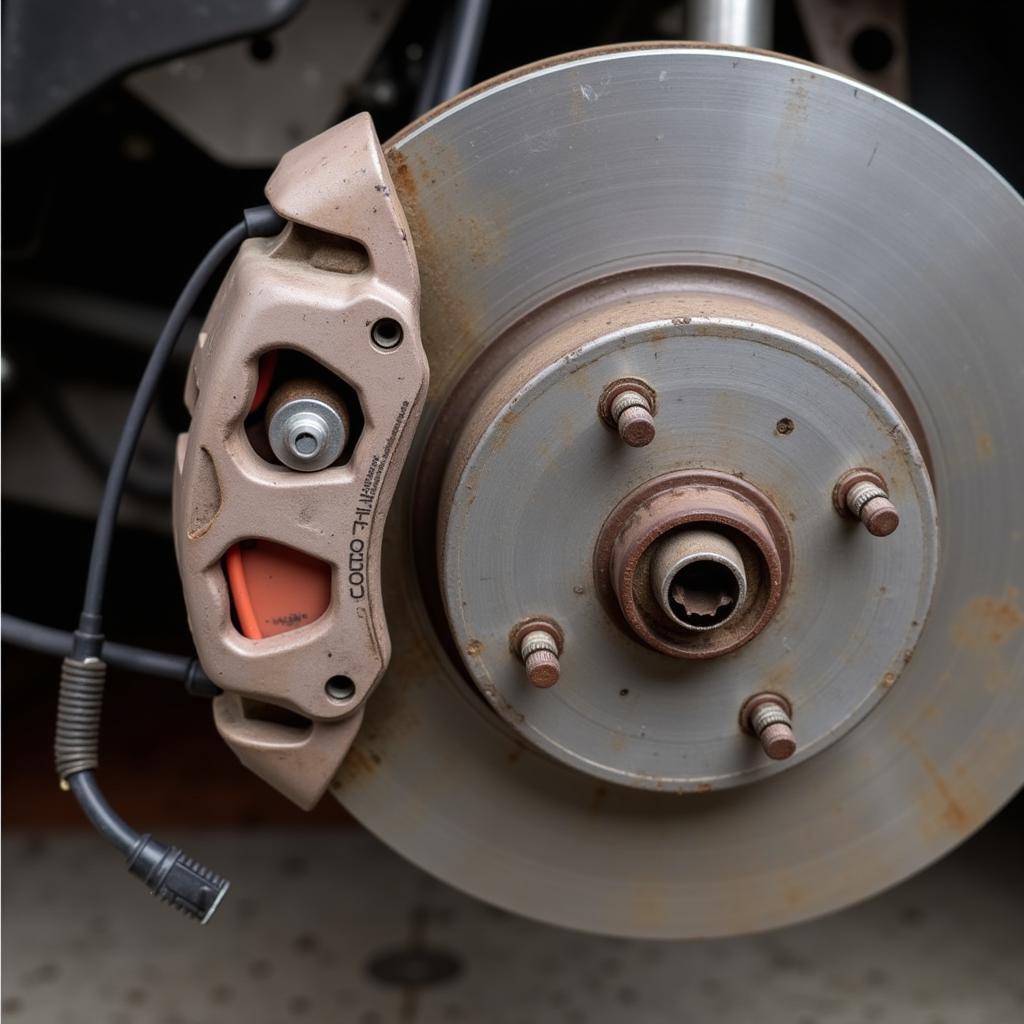So, you’ve just replaced your brakes on your trusty 2006 Town and Country, only to be greeted by a persistent brake warning light staring back at you from the dashboard. Don’t worry, you’re not alone. This is a common issue, even after a seemingly successful brake job. This article will delve into the possible reasons behind this frustrating problem and guide you through some DIY troubleshooting steps and solutions.
Why is My Brake Light Still On After Replacing the Brakes?
While it might seem counterintuitive, replacing your brakes doesn’t automatically extinguish the brake warning light. This light is part of your vehicle’s safety system and serves as an indicator of various potential issues within the braking system. Let’s explore some of the most common culprits:
1. Brake Fluid Level Low
One of the most frequent reasons for a stubborn brake warning light after a brake pad or rotor replacement is low brake fluid. Brake fluid is the lifeblood of your braking system, and over time, the fluid level naturally decreases.
Why it happens: As your brake pads wear down, the brake calipers need to extend further to engage the rotors. This extension draws more brake fluid from the reservoir. When you install new, thicker brake pads, the existing fluid level might not be sufficient, triggering the warning light.
Solution: Check your brake fluid reservoir. If it’s low, carefully top it off with the appropriate DOT 3 or DOT 4 brake fluid specified in your owner’s manual.
 Low Brake Fluid Reservoir
Low Brake Fluid Reservoir
2. Worn Brake Pad Sensor
Many modern vehicles, including your Town and Country, are equipped with brake pad wear sensors. These sensors are small wires embedded within the brake pad material.
Why it happens: As the brake pads wear down, the sensor wire eventually makes contact with the brake rotor, completing a circuit and triggering the brake warning light on your dashboard. Sometimes, even if the sensor itself is fine, it may have been damaged or improperly installed during the brake job.
Solution: First, inspect the brake pad wear sensors for any damage. If you find a broken or damaged sensor, it will need to be replaced. If the sensors seem fine, check for proper installation. They should be securely clipped into their slots and routed correctly.
 Worn Brake Pad Sensor
Worn Brake Pad Sensor
3. ABS Issue
The Anti-lock Braking System (ABS) is a crucial safety feature in your Town and Country. It prevents wheel lockup during hard braking, maintaining steering control. The ABS system has its own set of sensors, and a fault in this system can also trigger the brake warning light.
Why it happens: A malfunctioning ABS wheel speed sensor, a faulty ABS module, or even a blown fuse in the ABS system can be the culprit.
Solution: Diagnosing ABS issues typically requires a more advanced approach. If you suspect the problem lies within the ABS system, it’s best to consult a qualified mechanic or use an OBD-II scanner to read the specific ABS fault codes.
4. Faulty Brake Light Switch
While less common, a faulty brake light switch can also illuminate the brake warning light. This switch is located above the brake pedal and activates the brake lights when you press the pedal.
Why it happens: The brake light switch can wear out or malfunction over time, disrupting the signal sent to the brake lights and potentially triggering a warning light on the dashboard.
Solution: Testing the brake light switch usually involves checking for continuity with a multimeter. If the switch is faulty, replacing it is a relatively simple repair.
Still Seeing the Light? Time for Professional Help!
If you’ve gone through these troubleshooting steps and your brake warning light remains illuminated, it’s time to bring in the experts.
“Many car owners try to tackle brake issues themselves, and while some issues are simple fixes, others require specialized knowledge and tools,” says John Smith, Senior Automotive Technician at ABC Auto Repair. “Attempting complex brake repairs without proper expertise can compromise your safety.”
Remember, your brakes are a critical safety system in your vehicle. Don’t hesitate to seek professional assistance if you encounter persistent problems or are unsure about any aspect of your brake system’s repair or diagnosis.
Conclusion
A persistent brake warning light after replacing your brakes can be a frustrating experience. By systematically checking for common culprits like low brake fluid, worn sensors, or ABS issues, you can often pinpoint and address the problem yourself. However, if the issue persists, remember that professional help is just a phone call away. Don’t compromise your safety when it comes to your brakes—ensure they’re in top-notch condition for worry-free driving.
